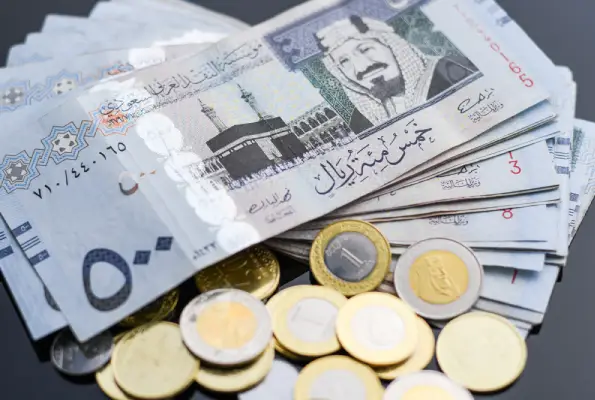Saudi Arabia-based banks’ money supply rose 8% in March 2024, as compared to the same month in 2023, to reach the SR2.82 trillion (USD 753 billion) mark, official data showed.
According to the data released by the Saudi Central Bank, also known as SAMA, the increase was mainly fuelled by a roughly 21% surge in banks’ term and savings accounts, reaching SR843.25 billion.
These deposits have also represented the second-largest portion, comprising 30% of the total money supply, following demand deposits, which constituted 50% at SR1.41 trillion.
“On the other hand, quasi-money holdings made up 21% of the total, experiencing a 1% decrease during this period. Meanwhile, currency outside banks accounted for an 8% share, showing a 10% growth,” reported Arab News.
Quite a few factors influenced the upsurge in term deposits. One of them is the elevated interest rate environment within the Kingdom, which, shaped by the United States Federal Reserve’s anti-inflationary monetary policy, has spurred individuals and entities to seek higher returns through these accounts.
Also, the increase in accounts held by government-related entities played a significant role. As per Fitch Ratings, these entities opted to channel their surplus liquidity into term deposits with commercial banks, thereby boosting the growth trajectory of such accounts.
“It is noteworthy that during 2022, SAMA raised key policy rates seven times, followed by an additional four increases in 2023. The central bank’s repo rate was last raised by 25 basis points to 6% in its July 2023 meeting, marking its highest level since 2001. Since then, rates have remained unchanged,” the news report stated further.
Meanwhile, inflation in the United States surged to a six-month high in March 2024, prompting investors to delay their expectations for Federal Reserve rate cuts.
“Deposits represent a costly funding source for banks, with heightened competition in the financial market significantly driving up their average cost. Despite this, the surge in interest rates also strengthened Saudi banks’ profits on the asset side. Higher borrowing rates led to increased income, offsetting the challenges posed by the expensive funding environment,” Arab News noted.
On the asset side, Saudi bank loans grew by 11% during this period to reach SR2.67 trillion, which suggests that the overall lending growth among Saudi banks outpaced deposits. In its April 2024 report, S&P Global suggested that Saudi financial institutions explore alternative funding strategies to manage the rapid lending increase, driven by rising demand for new mortgages.
The credit-rating agency also noted that the funding profiles of the Kingdom’s financial institutions will change, mainly due to a government-supported initiative aimed at boosting homeownership. As per S&P Global, mortgage financing accounted for 23.5% of Saudi banks’ total credit allocation by the end of 2023, compared to 12.8% in 2019.
They highlighted that the ongoing financing needs of the “Vision 2030” economic initiative, coupled with relatively sluggish deposit growth, are likely to prompt banks to seek alternative budget sources, including external funding.
S&P Global sees this trend to persist further, as corporate lending assumes a more significant role in growth in the coming years. The report also indicated that Saudi banks were expected to adopt alternative funding strategies to support this expansion.
S&P also noted that the stability of Saudi deposits mitigates the risk posed by maturity mismatch. Apart from this, the agency projected an increase in Saudi banks’ foreign liabilities, rising from approximately USD 19.2 billion by the 2023 end to meet the funding demands of robust lending growth, particularly amidst slower deposit expansion.
The report emphasised that Saudi banks have already tapped into international capital markets, and S&P Global anticipates this trend to continue over the next three to five years.



